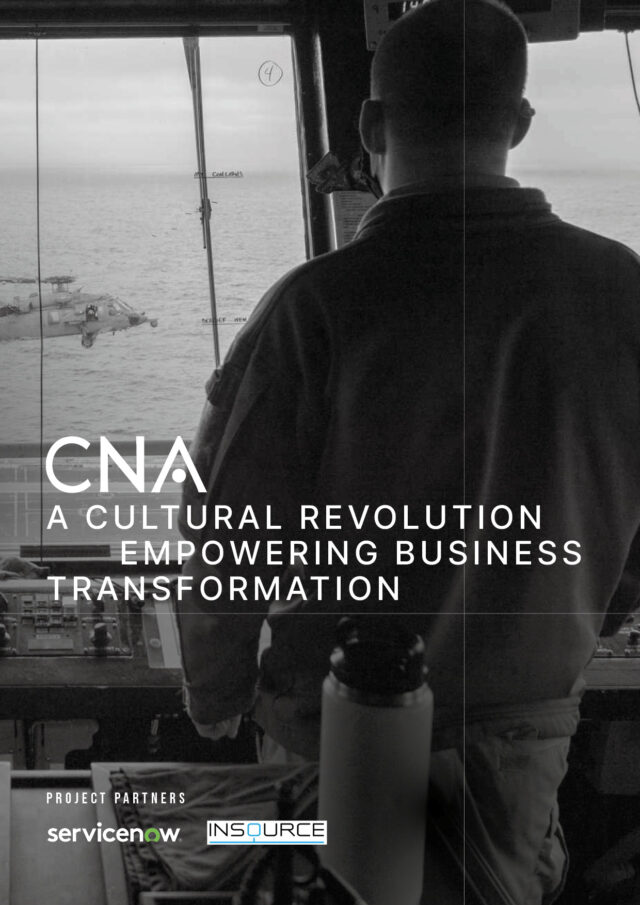Founded in 1966, Lockton Companies is the world’s largest privately held insurance brokerage firm employing more than 8,000 people worldwide, delivering insurance, risk management, employee benefits and retirement services. Drawing on more than five decades of experience, and leveraging the trust of a respected family-owned business, Lockton Re, the company’s global reinsurance arm, helps businesses understand, mitigate, and capitalise on risk.
“We were born digital,” says a proud Claude Yoder. A Founding Partner, and the company’s Analytics Leader, Yoder’s focus combines tech evangelism and strong business acumen to lead a data strategy which is unencumbered by legacy architecture. “Being Born Digital is one of our three main operating pillars, along with Empowered People and Fierce Independence,” he elaborates. “If you’re in a company that’s been around for decades, out of necessity, you’ve created and adopted technologies that were available at the time. Given the exponential changes in technology, it’s basically impossible to both remove legacy structures and utilise new architecture for many companies. So, starting fresh with a greenfield technology perspective allowed us to immediately grab the most modern software, approaches and infrastructure and take full advantage of them.”

Yoder explains that even though Lockton Re is smaller than some of its competitors in the market, and one of the newest entrants in the space, it has the agility to drive change, innovate and execute with its unique platform. “We’re nimble and able to build app-like tools & services with cloud-based frameworks that use modern development approaches. We’ve created solutions very quickly that create a tremendous amount of value for our clients.”
Democratising Analytics
Aiming to build applications and create capabilities that are not just in the actuarial domain or the preserve of the insurance/reinsurance expert, Lockton Re is endeavouring to democratise analytics for its employees and their customers. “We’re providing easier access to the insights we’re driving for our clients through the sophistication of our modelling and analytics work,” adds Yoder. “Anyone can use these tools. The code itself, and the way it has been architected might be very sophisticated, but its application and value can by realised by many more people outside of the analytics shop… Brokers are using it, our clients are using it, and it doesn’t come with a huge instruction manual. Like the apps on our phones, its intuitive and accessible and allows for a ‘data like water’ approach, meaning that information on our platform can be available everywhere, and to everyone.”
The technology journey
“It’s important to strike a balance with the build versus buy dynamic when it comes to new technologies,” reasons Yoder. “Building something yourself means involving your own internal team – they’re the software developers and architects – or you can buy it and partner with other firms to do that work for you. Balance is crucial. I think the idea that you can turnkey these things, just write a spec, hand it over, go to sleep for months and have the product delivered as you want it… there is no such thing. So, you need to have to have a bit of both. Our internal technology team is the best in the business, and we also have a very good relationship with Perficient for the development of our Lockton Re SAGE technology platform – in many ways they have become an extension of us; it’s a great example of how you can have a strategic partnership help you realise your goals.”
When assessing the benefits of new technologies Yoder and his team tend to focus less on a specific approach, be it machine learning or business automation, and concentrate more on driving an outcome. “We wanted a smarter way to create insights from publicly available data and ended up with an AI driven approach,” offers Yoder by example. “We started with a goal of what we wanted to achieve and then asked what was the best possible way to get there. And of course, it’s often that the deployment of modern tech is going to be the approach you take. In this case, we used an AI-driven tool to comb through reams of public information and get to the insights we needed to drive additional customer value.”
Lockton Re SAGE technology platform
Lockton Re SAGE is the company’s proprietary technology platform that democratises analytics with real-time solution modelling that offers a better understanding of the impact of risk. “There’s a lot of sophistication under the hood that drives optimal decision-making,” asserts Yoder. “Through Lockton Re SAGE, customers can choose quickly from hundreds of re-insurance structures – a unique and comprehensive approach driven by transparent goals and metrics.”
The ‘sage’ advice Lockton Re can offer customers is comprehensive and considers all of the different options that may be available. “Ultimately, it’s about selecting reinsurance structures that make the most sense,” notes Yoder. “Rather than showing clients a few options, we’re able to build hundreds and very, very quickly. Those options are weighed against a set of easily understood metrics, narrowing down the hundreds to a set that makes the most sense for our customers to deliver optimal decision making: comprehensive, goal specific, and transparent. Our customers love it.”
Lockton Re needed to have a collaborative platform, so everything had to be cloud based. “This also allows us to increase our compute power seamlessly and cost effectively,” notes Yoder. “And as we go about capturing data with our platform, we’re using business automation as one of the approaches to do that as efficiently as possible.”
Leveraging Lockton Re’s best-in-class technology stack, the Lockton Re SAGE platform represents a very different approach to the traditional reinsurance brokerage… An interactive, intuitive, web-based application, it provides deeper analytical insight to the company’s clients. Providing a transparent view of how options were created it allows users to dynamically make changes to reinsurance structures allowing them to understand the impacts on financial performance. “It’s the beginning of something new for reinsurance and puts us more in the realm of other industries where modern technology has already pushed forward,” notes Yoder. “The feedback has been overwhelmingly positive, in part because anyone can use it. That’s the greatest sign that what we’ve built with Perficient – our digital consultant and developer – is really working.”

Digital connectivity
Yoder highlights that the insurance industry is driven by traditions that have stood the test of time, to the point that it has been slow to foster the adoption of new technologies. “It’s probably behind some of its competing sectors,” he says “If we look at digital connectivity this has gone some way to making the industry paperless with the introduction of ‘older’ solutions like DocuSign – it adds value but it’s really the beginning of this continuum of digital connectivity. If you go one step further along you might consider portals where you, your clients and your markets can manually share different pieces of information. And because it’s a portal all counterparties can connect with simplified transparency.
“Taking one step beyond that is where we’ve been heading, and have achieved in part – true digital connectivity. Here, you’ve done the hard yards of mapping data fields with your counterparty and you’ve written code that allows you to transfer information back and forth using services like APIs and other programmatic connections. With the push of a button, you can push information to a counterparty. Their system is ingesting the information and they’re automatically doing things with it on their end, returning information to you through that same plumbing you’ve created. In that sense, you’ve got true connectivity. It’s all happening, unseen by the human eye, through a full start to finish connection that you’ve built with incredible efficiency, much lower cost and much greater speed to drive as much value as you possibly can.”
Business meets Tech
Yoder believes one of the greatest challenges faced in the industry is to get business minds and technical minds to meet on the same wavelength. “Technology can be incredibly complex and very sophisticated, the jargon and nomenclature alone would be foreign to many people. Translating that to a business person can be challenging. Similarly, the technical person will not always be familiar with the business objective and how their technology is going to be brought to bear to solve key problems. It’s important to bring those communities together so they can start to speak each other’s languages. We have members of our internal team that do exactly that – people that have experience sitting in the middle and who are able to straddle those realms of business and tech. They’re hard to come by but we’re lucky to have people that do just that in our own internal shop at Lockton Re.”
Talent management
“We need people from different backgrounds that bring a diversity of experience to the team,” maintains Yoder. “People are not going to be equally good in all things so you want to have resources that can support one another and balance things out, just like the typical team analogy would suggest. Each person is bringing something unique enough and that is at least a little bit different than their colleagues to build a better team.”
Yoder highlights that a key feature of Lockton Re, across disciplines, is an orientation towards execution. “It’s particularly important because in fields like analytics and technology, people are invariably very smart, but you want that intelligence and creativity to drive solutions that are achieved. At times, that can be difficult because these things are complicated; there are different points of view, you can get lost in a forest of ideas around the best way to proceed without progressing as quickly as required. That’s why a diverse team, that shares an orientation towards execution, is essential for success.”
The art of data science
Yoder believes a good data scientist executing on the goals of any enterprise must meet the needs of both the technology stack and business vision. “Similarly, on the business side, employees need to have an appropriate amount of technical acumen,” he adds. “Whether it’s more of a quantitative or technical nature, or being able to assess whether the systems a business are using are effective is important. We’re not asking our data scientists to be reinsurance experts across markets and similarly, we’re not asking our executives to know how to code. However, each knowing enough about how the other works makes our teams much better at what they do. So much of what’s going on at Lockton Re from a business perspective is underpinned by technology and quantitative thinking.”
What’s next?
Under Yoder’s leadership, Lockton Re will continue to enhance its platform with a focus on constant evolution to drive change in the industry from its unique and agile position. “This marriage of our entrepreneurial ‘Born Digital’ mindset with ‘Empowered People’ and ‘Fierce Independence’ enables us to move much more quickly than our competition,” he confirms. “Our greenfield platform goes beyond the technology and analytics components and allows for further innovation. The Lockton Re platform allows us to experiment with our approach, some of it analytics-based and some of it based on new products. As a result, we are offering new solutions for our customers that they won’t find anywhere else.”









